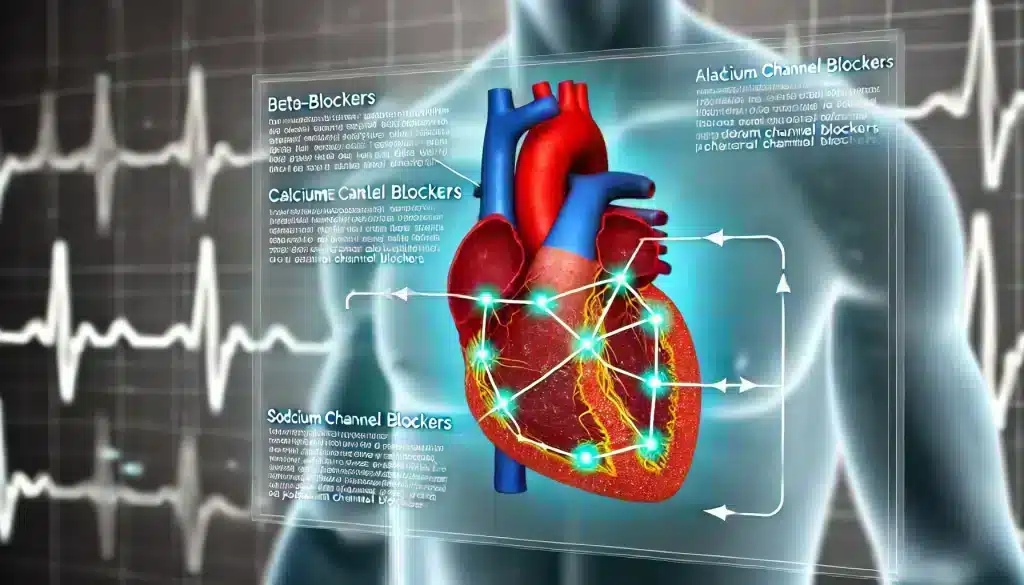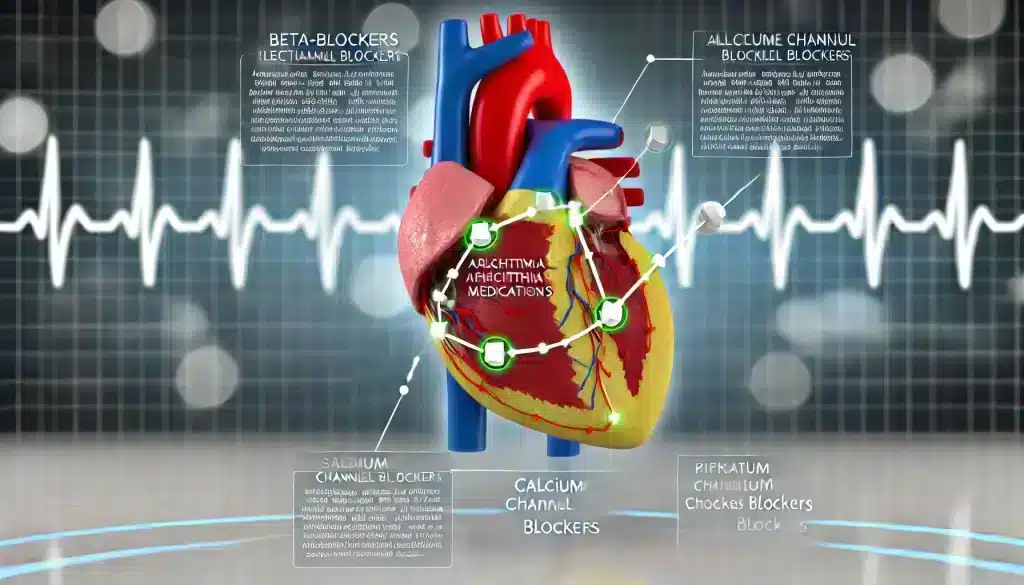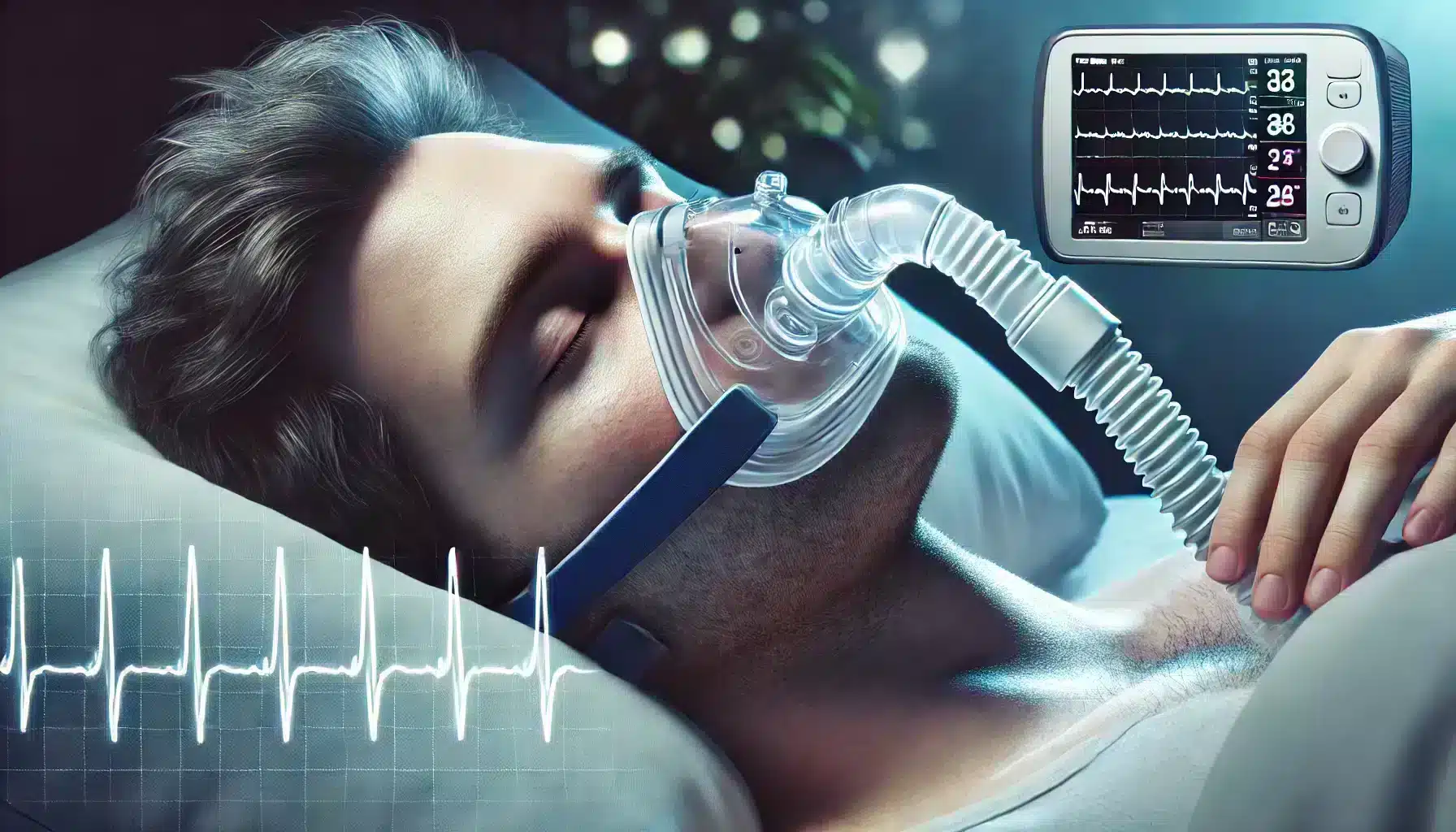Understanding Arrhythmias: Causes and Symptoms
Arrhythmias are irregular heartbeats caused by improper electrical impulses that regulate the heartbeat. These can result in the heart beating too fast (tachycardia), too slow (bradycardia), or irregularly. The most common causes of arrhythmias include heart disease, high blood pressure, smoking, heavy alcohol consumption, excessive caffeine intake, stress, and certain medications. Symptoms of arrhythmias can range from being asymptomatic to experiencing palpitations, dizziness, chest pain, shortness of breath, or even fainting. Understanding the underlying causes and symptoms is crucial in managing arrhythmias effectively and preventing potential complications.
Overview of Treatment Options for Arrhythmias
Treatment options for arrhythmias vary depending on the type and severity of the condition, as well as the underlying cause. The main goal of treatment is to restore the normal rhythm of the heart, control heart rate, and prevent future arrhythmias. There are several approaches to managing arrhythmias, including lifestyle changes, medications, medical procedures, and in some cases, surgery. Lifestyle modifications, such as reducing caffeine and alcohol intake, managing stress, and avoiding smoking, can help manage milder cases of arrhythmia. For more severe cases, medical procedures like cardioversion, catheter ablation, or the implantation of devices like pacemakers or defibrillators might be necessary. However, medications remain the cornerstone of arrhythmia management, providing a non-invasive method to control heart rhythm effectively.
Medications for Arrhythmias: How They Work

Medications play a vital role in managing arrhythmias by targeting the heart’s electrical system to control abnormal rhythms. These medications work by modifying the electrical signals within the heart, thus helping to maintain a regular heartbeat. The choice of medication depends on the type of arrhythmia, its underlying cause, and the patient’s overall health condition. There are several classes of drugs commonly used to treat arrhythmias, each working through different mechanisms to achieve the desired effect on heart rhythm.
Beta-Blockers
Beta-blockers are a class of drugs that reduce the heart rate and the force of contraction by blocking the effects of adrenaline on the heart. This results in decreased heart rate and blood pressure, which helps prevent abnormal rhythms. Beta-blockers, such as metoprolol, atenolol, and propranolol, are often prescribed for managing atrial fibrillation, supraventricular tachycardia, and other arrhythmias associated with increased heart rate. They are particularly useful in reducing symptoms like palpitations and preventing arrhythmia recurrence.
Calcium Channel Blockers
Calcium channel blockers, such as verapamil and diltiazem, work by inhibiting the entry of calcium into the heart muscle and blood vessel walls. This leads to relaxation of the heart muscles and dilation of the blood vessels, which helps to lower heart rate and stabilize heart rhythm. Calcium channel blockers are primarily used for controlling rapid heart rates in conditions like atrial fibrillation and supraventricular tachycardia. They are particularly effective in patients who may not tolerate beta-blockers well.
Sodium Channel Blockers
Sodium channel blockers, including drugs like flecainide, quinidine, and procainamide, work by slowing down the electrical conduction in the heart. These medications stabilize the heart’s electrical impulses, reducing the likelihood of arrhythmias. Sodium channel blockers are especially useful in treating ventricular arrhythmias and certain types of atrial arrhythmias. However, their use requires careful monitoring as they can sometimes worsen existing arrhythmias or cause new ones.
Potassium Channel Blockers
Potassium channel blockers, such as amiodarone, sotalol, and dofetilide, prolong the duration of the heart’s electrical activity by delaying repolarization. This helps to prevent the heart from beating too quickly and irregularly. Potassium channel blockers are often used to treat both atrial and ventricular arrhythmias, particularly in patients who have not responded to other medications. Due to their potential side effects, including the risk of torsades de pointes, a type of life-threatening arrhythmia, they are typically reserved for more severe cases.
Anticoagulants and Antiplatelet Drugs
Anticoagulants and antiplatelet drugs are not directly used to correct arrhythmias but are crucial in managing the risks associated with them, particularly in preventing stroke. Arrhythmias like atrial fibrillation increase the risk of blood clots forming in the heart, which can travel to the brain and cause a stroke. Anticoagulants, such as warfarin, dabigatran, and rivaroxaban, thin the blood to reduce this risk. Antiplatelet drugs like aspirin also help prevent clot formation. The use of these medications depends on the patient’s overall risk factors and requires careful monitoring to balance the benefits with the risk of bleeding.
Digitalis Glycosides
Digitalis glycosides, such as digoxin, work by increasing the force of the heart’s contractions and slowing the electrical conduction between the atria and ventricles. This makes them particularly useful in treating heart failure patients who also have atrial fibrillation. Digoxin is known for its ability to control heart rate without significantly lowering blood pressure, making it a preferred option in certain patient populations.
- Benefits: Helps control heart rate, especially in heart failure patients with arrhythmias.
- Considerations: Requires regular monitoring of blood levels due to the risk of toxicity.
Adenosine and Its Role in Managing Arrhythmias
Adenosine is a unique antiarrhythmic drug used primarily in acute settings to quickly terminate supraventricular tachycardia (SVT). It works by temporarily blocking the electrical conduction in the atrioventricular node, essentially “resetting” the heart’s rhythm. Adenosine is administered intravenously and has a very short half-life, meaning its effects are immediate but brief. It is particularly effective in clinical emergencies where rapid rhythm control is necessary.
- Usage: Administered intravenously in emergency settings for rapid control of SVT.
- Mechanism: Blocks electrical conduction through the AV node.
- Side Effects: Can cause temporary chest pain, flushing, and shortness of breath.

Factors to Consider When Choosing Arrhythmia Medications
Choosing the right medication for arrhythmias involves a comprehensive assessment of the patient’s condition, the specific type of arrhythmia, and potential side effects. Key factors include:
- Type of Arrhythmia: Different medications target different types of arrhythmias; for instance, beta-blockers are commonly used for atrial fibrillation, while sodium channel blockers are used for ventricular arrhythmias.
- Patient’s Overall Health: Comorbid conditions such as heart failure, hypertension, and kidney disease can influence the choice of medication.
- Side Effect Profile: Some medications have significant side effects that need to be weighed against their benefits. For example, amiodarone can cause lung and thyroid problems, which may limit its use.
- Drug Interactions: Patients on multiple medications need careful consideration of potential drug interactions, particularly with anticoagulants and other heart medications.
- Monitoring Requirements: Some drugs, like digoxin, require regular blood tests to monitor levels and prevent toxicity.
Side Effects and Risks of Arrhythmia Medications
While medications for arrhythmias are effective in controlling abnormal heart rhythms, they come with potential side effects and risks. It’s essential for patients to be aware of these risks and for healthcare providers to monitor their effects closely. Common side effects and risks include:
- Bradycardia: Medications like beta-blockers and calcium channel blockers can slow down the heart rate excessively, leading to symptoms like dizziness or fatigue.
- Proarrhythmia: Some antiarrhythmic drugs, especially sodium and potassium channel blockers, can paradoxically cause new or worsening arrhythmias, including dangerous ventricular arrhythmias.
- Organ Toxicity: Drugs such as amiodarone are associated with toxicity affecting the lungs, liver, thyroid, and eyes, requiring regular monitoring.
- Bleeding Risks: Anticoagulants and antiplatelet medications increase the risk of bleeding, including serious bleeding events like intracranial hemorrhage.
- Electrolyte Imbalances: Medications can affect electrolyte levels, such as potassium and magnesium, which are critical for maintaining normal heart function.
It is crucial to discuss the potential side effects with a healthcare provider and to have regular follow-ups to adjust medications as needed. Monitoring blood levels, conducting periodic heart function tests, and adjusting doses can help mitigate some of these risks.
Frequently Asked Questions (FAQ)
What are the most common medications used to treat arrhythmias?
Common medications used to treat arrhythmias include beta-blockers, calcium channel blockers, sodium channel blockers, potassium channel blockers, anticoagulants, and digoxin. The choice of medication depends on the type of arrhythmia and the patient’s overall health.
How do beta-blockers help in managing arrhythmias?
Beta-blockers help manage arrhythmias by slowing the heart rate and reducing the force of contraction, which decreases the heart’s workload and prevents abnormal rhythms. They are particularly effective in treating atrial fibrillation and supraventricular tachycardia.
What are the side effects of antiarrhythmic medications?
Side effects can vary depending on the medication but commonly include bradycardia, dizziness, fatigue, gastrointestinal issues, and in some cases, proarrhythmia or organ toxicity. It is important to monitor these side effects under the guidance of a healthcare provider.
Can arrhythmia medications cause new arrhythmias?
Yes, some antiarrhythmic medications can cause new or worsening arrhythmias, a phenomenon known as proarrhythmia. This risk is particularly associated with sodium and potassium channel blockers, highlighting the need for careful monitoring during treatment.
Is it necessary to take anticoagulants if I have an arrhythmia?
Not all arrhythmias require anticoagulant therapy, but conditions like atrial fibrillation significantly increase the risk of stroke due to blood clot formation. Anticoagulants may be prescribed to reduce this risk, but the decision is based on individual risk factors and should be made in consultation with a healthcare provider.



